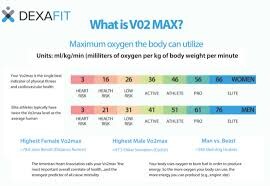Running News Daily
Running News Daily is edited by Bob Anderson in Los Altos California USA and team in Thika Kenya, La Piedad Mexico, Bend Oregon, Chandler Arizona and Monforte da Beira Portugal. Send your news items to bob@mybestruns.com Advertising opportunities available. Train the Kenyan Way at KATA Kenya. (Kenyan Athletics Training Academy) in Thika Kenya. KATA Portugal at Anderson Manor Retreat in central portugal. Learn more about Bob Anderson, MBR publisher and KATA director/owner, take a look at A Long Run the movie covering Bob's 50 race challenge.
Index to Daily Posts · Sign Up For Updates · Run The World Feed
Boost Your VO2 Max with These 5 Expert-Recommended Workouts
Learn more about this metric and the best training sessions to add to your schedule to boost your cardio fitness.Running at the best of your ability is somewhat of a numbers game. To hit new PRs, you’ll want to keep tabs on all kinds of stats, like distance covered, pace per mile (or interval), max heart rate, hours slept… We could go on. But at the end of the day, there’s one measurement that stands out for having a huge influence on performance enhancement: your VO2 max.
All About VO2 Max and What It Means


“VO2 max is a measure of the amount of oxygen your body can use while running or the maximum rate at which we can race a middle- or long-distance race,” says Juli Benson, Olympian and owner of Juli Benson Training. It’s a number that denotes what volume of oxygen (in milliliters per kilogram of bodyweight per minute) that your body delivers during activity. Simply put, it’s a gauge of your aerobic capacity.
If you’re interested in knowing your exact number, there are a few ways to measure it. The first, and most accurate, is to have it tested in a performance lab. That’s also pricey and the most uncomfortable, as you’ll have to endure a tough session at an all-out effort on a treadmill with a mask strapped to your face.
Many new smartwatches also offer VO2 max approximations; some Garmin watches, for example, estimate your number based on data including heart rate and running pace, plus info about your max heart rate.
The easiest way to approximate your VO2 max is to use a simple equation, based on your max and resting heart rates: VO2 max = 15x (HR max/resting HR)
All that being said, you can train to improve your VO2 max, and your overall running performance, without calculating your exact number. Here’s how.The Best Types of Workouts to Boost VO2 Max
When it comes to improving your VO2 max, your genes play a huge role. However, “with good old-fashioned hard work, it’s possible to improve your VO2 max,” says Benson.
Getting faster by way of VO2 max work is all about efficiency. “The higher your VO2 max, the faster or more efficiently you’ll be able to finish a race or training run—as your body moves the oxygen in the most effective manner,” says April Gatlin, ACE-certified personal trainer, master trainer, and coach for STRIDE Fitness.
The best way to train your body to do just that is by regularly tackling intervals—both interval runs and HIIT sessions incorporating strength moves. The good news: While you need to do intervals regularly, it shouldn’t take long before you see gains. “If consistent in training to increase VO2 max, people should start to notice a difference in approximately six weeks,” says Gatlin.
Research backs up the keys that unlock better VO2 max: Runners who did 200-meter interval workouts for only 10 weeks improved their aerobic capacity and VO2 max significantly more than runners who stuck to moderately-paced workouts, according to a 2018 study published in the Journal of Strength and Conditioning Research. Similarly, people who did HIIT sessions with intervals as short as 30 seconds for four weeks or less showed VO2 max improvements in a 2019 meta-analysis of studies published in the Journal of Science and Medicine in Sport; participants who did intervals closer to two minutes for four to 12 weeks showed even greater gains.
5 Workouts to Challenge Your VO2 Max
The best way to improve your VO2 max is to tap into the right heart-rate zone during those intervals. “In general, VO2 max work should be completed at about 90 to 100 percent of your max heart rate,” says Benson. That’s about the same as a 5K pace, and each of the five workouts below—recommended by Benson and Gatlin—include intervals at that approximate intensity. Feel free to dial it back a bit, Benson says, if you’re new to this type of training. Before each of these sessions, warm up by jogging for eight to 15 minutes, then do some dynamic stretches or range of motion drills, like high knees and leg swings, followed by a few reps of 20-second strides to prep your body to pick up the pace.
The tough interval sections of the workouts can range from about 10 minutes for novices to 25 minutes for advanced runners; pick your reps below to dial into the right level for your fitness. It’s always smart to start on the lower end, see how it feels, and work your way up to more reps.
Benson recommends doing a VO2 max workout twice a month for newbies, up to once a week for more experienced runners. And for the biggest benefit, be careful not to schedule them the day after a long run or other challenging session. “These types of workout sessions should be done during the week and sandwiched between two very easy days of running, cross training, or rest days,” says Benson.
Workout 1: 1,000M Repeats
Run 1,000 meters at a 5K effort, then walk or jog for the same amount of time. Repeat 3 to 6 times.
Workout 2: Two by Twos
Run for 2 minutes at a 5K effort, then walk or slowly jog for 2 minutes. Repeat 4 to 8 times.
Workout 3: Ladder
Run for 2 minutes and 30 seconds at 10K effort, rest for the same amount of time. Run 3 minutes and 30 seconds at 10K effort, rest for the same amount of time. Run 4 minutes and 30 seconds at 10K effort, rest for the same amount of time. Repeat entire set of intervals at 5K effort.Workout 4: Bodyweight AMRAP
Do 10 push-ups followed immediately by 10 bodyweight squats, then run 400 meters at a 5K or 10K pace. Repeat as many reps as possible for 20 minutes, resting when needed.
Workout 5: EMOM Sprints
Sprint at a pace you can sustain for 10 to 15 seconds, then jog for the remainder of the minute. Repeat for 20 minutes. Work up to sprinting for 20 or 30 seconds each minute.
(09/07/2024) Views: 264 ⚡AMPby Men’s Health




